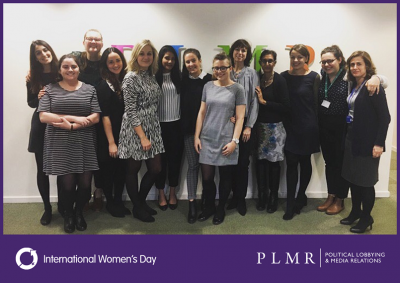International Women’s Day falls on the 8th of March every year. It is a day where women’s achievements are celebrated internationally. It is also a day to reflect on the work still to be done to reduce gender inequality around the world. On International Women’s Day, PLMR Scotland takes a look at the measures the Scottish Government is taking to address the gender pay gap.
While it is clear that gender inequality in Scotland is declining, with the three main party leaders in the Scottish Parliament being female, and more women in leadership roles within business, statistics show that more needs to be done to address implicit and explicit gender discrimination in Scotland.
The gender pay gap is the key indicator used by experts to determine women’s inequality at work, and the very different labour market experiences of men and women. The gender pay gap is the difference between women’s and men’s average weekly full-time equivalent earnings. The overall pay gap in Scotland stands at 15%.
Research by PwC has found that if this gap can be closed, female earnings will increase by approximately 18%. This amounts to an extra £5,300 per head per year. According to Close the Gap (a Scottish Government backed initiative designed to address gender inequality, closing the gender pay gap in employment could add up to £17bn to Scotland’s economy.
The Scottish Government believes that the gender pay gap is harmful not only to the women affected by it, but to Scotland’s economy as a whole. It has pledged to put in place a number of measures to help close the gap.
As such, a focus on equality and fairness is at the heart the Scottish Government’s Scotland’s Economic Strategy which states that:
‘Maximising economic opportunities for women to participate fully in the economy, and recognising the wider social role they provide, is key to improving economic performance and tackling inequality.’
The strategy commits to addressing women’s inequality in employment and encouraging employers to mitigate the gendered barriers which prevent economic growth such as occupational segregation.
In addition, a 2016 amendment to The Equality Act 2010 (Specific Duties) (Scotland) Regulations 2012 legislates that Scottish public bodies must gather and use employee information to publish gender pay gap information and publish statements on equal pay. This is designed to identify areas where public sector bodies are failing to address the pay gap in their workplace. Finally, the Scottish Government has taken action to improve women’s representation on boards, for example through the Partnership for Change 50/50 by 2020 campaign, and has led by example through ensuring that the Scottish Government’s Cabinet has an equal split of men and women.
This does seem to have had a positive effect, with the latest statistics showing that the gap has reduced by 1.48% since 2015. However, Close the Gap has pointed out that these measures have mainly focused on the public sector and that the private sector is falling behind in its duties to address inequality in the workplace.
Research shows that private sector employers are less likely to have good equalities practice. In fact, when women’s participation in the Scottish manufacturing sector was mapped, there were pay gaps of up to 44% in some sub-sectors. This means that while progress has been made, and is continuing, more needs to be done to bring best-practice in the private sector in line with the public sector.
As such, the Scottish Parliament’s Economy, Jobs and Fair Work Committee is currently seeking views on the gender pay gap in Scotland, to inform its inquiry in 2017. They want to:
“Explore the effect of the gender pay gap on the Scottish economy, with a particular focus on business performance, the Scottish public sector and Scottish Government action required to address the issue.”
The Committee plans to focus the inquiry on defining the gender pay gap, the benefits to businesses of closing the pay gap, best and worst practice in public and private sectors and finally, what action the Scottish Government is taking, and could take, to reduce the gender pay gap overall. The Committee intends to take evidence between March and May 2017 and report to Parliament in June 2017.
The Scottish Government has clearly earmarked closing the pay gap as a social and economic priority and, as such, both the public and private sector can expect more scrutiny around how they address gender inequality in the workplace and more pressure to ensure that employers are taking reasonable steps to close the gender pay gap.





